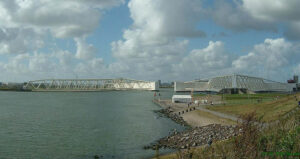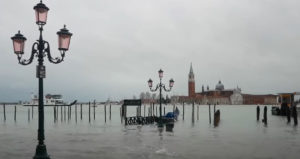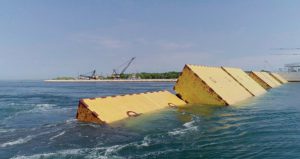Venice: MOSE flood barrier withstands fire test
-
 Editorial Team
Editorial Team
Share article:
The moment when the MOSE flood barrier would do its work during a storm was eagerly awaited. Would the controversial system that over the years has been affected by erosion and corrosion be able to protect the fragile Venice lagoon? Last weekend the barrier passed that test by fire for the first time. Northern Italy and southern France were plagued by storms and heavy rains and for the first time in years San Marco Square remained dry.
Many Venetians posted on social media that the functioning of the flood barrier is the first good news of 2020. Everyone involved was particularly anxious as to whether the 78 steel doors would rise from the sea floor to protect Venice. MOSE could start working in whole or in part during a storm. Just one year ago the San Marco square was flooded by one meter of water.
Erosion and corrosion
In November 2019, Water News Europe reported inspections and tests by the Consorcio Venezia Nuevo (CVN) showed that many of the doors have already been eroded by salt water and mussels. The flood barrier risks structural failure, also because a different type of steel was used than prescribed in the design. Experts state that the 156 hinges connecting the gates to the concrete enclosure – each weighing 36 tons – are at an extremely high risk of being unusable. In July of this year a test was successfully carried out with good weather and now the barrier has finally been able to prove itself during a storm. In the photos that appeared on social media you can see that the construction has been affected by corrosion.
Climate change
As a result of rising sea levels and subsidence, the “acqua alta” will become more common in Venice. The MOSE barrier was designed to protect the lagoon for at least a hundred years, but it is now uncertain whether the barrier will be able to function for that long. “The sea will eventually rise to a level where even continued closures cannot protect the city from flooding,” concluded a UNESCO report in 2011. The MOSE barrier took a total of 17 years, and its construction led to multiple scandals. The costs ultimately turned out to be more than four billion euros higher than the 1.6 billion euros initially budgeted.














